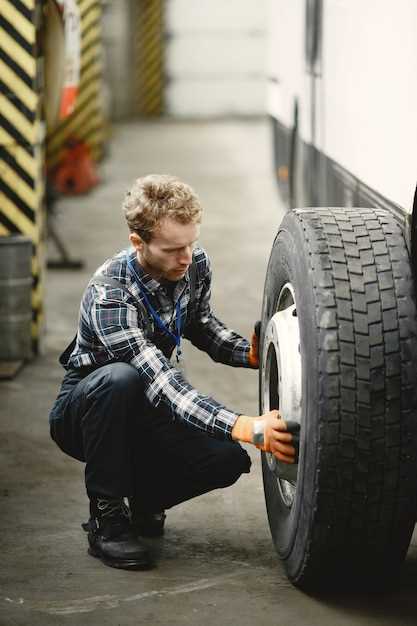
Check your tire pressures regularly. Maintaining optimal tire pressure not only enhances grip but also improves fuel efficiency during races. Aim for the manufacturer’s recommended PSI, and adjust according to track conditions.
Braking system inspection is paramount. Look for signs of wear on brake pads and rotors. Replacing these components on your own can significantly improve stopping power and safety, especially in high-speed scenarios.
Regular fluid changes are non-negotiable. Engine oil, transmission fluid, and coolant require routine checks. Select high-performance fluids to ensure that your vehicle operates smoothly and efficiently under competitive conditions.
Battery maintenance is often overlooked. Secure connections and clean terminals to prevent starting issues. Consider upgrading to a lightweight race battery for improved performance.
Brake fluid should be flushed and replaced periodically. Moisture can reduce boiling points and lead to brake failure. Use a pressure bleeder for a thorough job, ensuring that your braking system is always primed for action.
Aligning your wheels can enhance handling and tire longevity. Regular checks and adjustments can prevent uneven tire wear, giving you an edge during tight turns.
Suspension components should be inspected for wear as well. Look for leaks in dampers and ensure bushings are intact. Replacing worn parts can lead to improved stability and responsiveness on the track.
Replacing Brake Pads and Rotors Safely
To replace brake pads and rotors, first, ensure the vehicle is on a level surface and securely supported with jack stands. Always wear safety glasses and gloves.
Loosen the wheel nuts before lifting the car with a jack. Once elevated, completely remove the wheel to expose the braking components.
Remove caliper bolts and carefully detach the caliper from the rotor, using a bungee cord or rope to hang it without stressing the brake line. Avoid letting the caliper dangle unsupported.
Take off the old pads and check the condition of the rotors. If they are excessively worn or warped, replace them as well. Clean the rotor surface with brake cleaner before installation.
Install new brake pads, ensuring they are oriented correctly. Position the caliper back over the new pads and secure it by tightening the caliper bolts to the manufacturer’s specified torque.
Before replacing the wheel, pump the brake pedal several times to ensure proper pad seating. Replace the wheel and tighten the nuts in a crisscross pattern to maintain even contact.
Finally, lower the vehicle and conduct a test drive at low speeds to check for any unusual sounds or behavior. Ensuring proper function and safety during maintenance is key.
Adjusting Suspension Settings for Optimal Handling

Begin with tire pressure adjustments. Ensure it is within the manufacturer’s recommended range, as incorrect pressure affects grip and handling characteristics.
Next, focus on shock absorber settings. Increasing damping will tighten handling and reduce body roll during cornering, while decreasing it can enhance comfort but may compromise responsiveness.
Consider ride height modifications. Lowering the vehicle can improve center of gravity, leading to better cornering stability. However, ensure there is sufficient clearance to avoid bottoming out on uneven surfaces.
Experiment with camber angle. A negative camber increases tire contact with the road when cornering, enhancing grip. Adjust this based on driving style – more aggressive driving may require more negative camber.
Pay attention to toe settings. Toe-in stabilizes straight-line performance, while toe-out enhances cornering. A small adjustment can significantly impact handling; start with slight modifications and test the results.
Regularly inspect and maintain suspension components. Worn bushings or damaged links can drastically affect handling and should be replaced promptly.
Utilize corner weighting to achieve balanced handling dynamics. Adjust spring rates or ride height to align the weight distribution across all four corners for optimal performance.
Document changes and note impacts on handling. Tracking adjustments helps refine settings for preferred driving characteristics over time.
Tuning Engine Performance with Basic Modifications

Begin with upgrading the air intake system. A high-performance air filter enhances airflow, resulting in improved combustion efficiency. Consider brands like K&N or AEM for reliable options.
Next, replace the exhaust system. A less restrictive cat-back exhaust promotes better exhaust flow, which can lead to power gains. Look for systems designed specifically for your engine to ensure compatibility and performance gains.
Adjusting the engine’s ECU settings can provide substantial benefits. Flash tuning or reprogramming the engine management system helps optimize fuel delivery and ignition timing. Use tools like COBB or HP Tuners for precise adjustments.
Install a performance chip. These chips modify the engine parameters, allowing for increased horsepower and torque. Ensure the chip is suitable for your specific make and model.
Consider lightweight components. Replacing heavy stock parts with lighter alternatives, such as aluminum pulleys or carbon fiber intakes, reduces the overall weight, leading to better acceleration.
Increasing the compression ratio by swapping pistons can dramatically boost performance. Select pistons with a higher compression rating, but be mindful of necessary fuel octane levels to prevent knocking.
Lastly, maintain regular servicing. Fresh oil and clean spark plugs ensure optimal engine performance and longevity. Frequent checks on components like fuel filters and ignition coils contribute to consistent power delivery.



